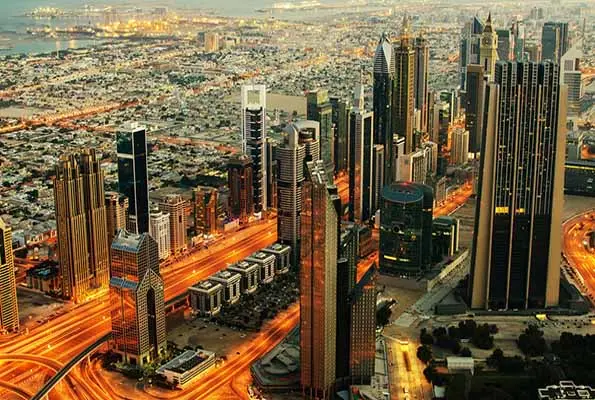Because of the high demand for smaller units brought on by population growth and the limited supply of new units in certain parts of Dubai, there is a reported shortage of those units.
The update comes at a time when the Emirati city’s real estate market has recorded 477 sales transactions worth AED1.66 billion, in addition to 129 mortgage deals of AED430.56 million, and 20 gift deals amounting to AED60.74 million.
On January 8, 2024, the sector saw the sales of 431 villas and apartments worth AED983.33 million, and 46 land plots worth AED674.53 million. The mortgages included 101 villas and apartments worth AED155.57 million and 28 land plots valued at AED275 million, bringing the total realty transactions on that particular day to over AED2.1 billion.
However, industry insiders claim that Old Dubai neighbourhoods are experiencing property scarcity due to a lack of developmental activities, while the housing demand is rising among the Emirate’s rapidly expanding population.
Knowing The Crisis In Detail
Over 100,000 new residents joined Dubai in 2023, and over 176,000 more have moved here since 2021. Smaller rental units are scarce at the same point in time.
According to the real estate consultancy Asteco, apartment rentals in older and cheaper Dubai neighbourhoods saw a double-digit surge in the third quarter of 2023, rising by as much as 23% over the same period in 2022.
Furthermore, New Dubai regions have the benefit of freehold property ownership, increasing demand for new apartments and luring developers to start more projects in the emerging areas.
According to industry leaders, the New Dubai districts have a sufficient supply of smaller units to match the population’s increasing demand, which is projected to reach roughly 6 million by 2040.
Pay Attention To Upscale Developments
There is a dearth of smaller apartments in Old Dubai, which is home to larger, roomier apartments built 20 to 35 years ago. Dubai’s population was substantially smaller during that time, mostly made up of families with multiple children.
As a result, private property owners created exceptionally roomy apartments. Most two-bedroom apartments come with a separate room for an assistant, large laundry and storage areas, and private bathrooms for every room, according to Svetlana Vasilieva, sales director for Metropolitan Homes’ secondary market, while interacting with the Khaleej Times.
According to Alan James Gammon, chief operating officer of ACE Luxury Property, there are other factors contributing to this scarcity, such as population growth, a rise in the need for compact living spaces, and a preference for developing upscale real estate projects over those that provide affordable housing.
Gammon continued, “Dubai’s old, established communities are still in high demand, especially in Bur Dubai and Deira, where there isn’t much room for new construction.”
“Although the cultural diversity of Old Dubai contributes to its allure, the limited space prevents smaller residences and more services from being offered. As a result, many recent arrivals in older neighbourhoods are forced to live in shared and rented flats,” the official stated further.
Gammon went on to say that there are more studios and one-bedroom apartments available in New Dubai, which is distinguished by its modern retail and residential developments, large land area, and opulent homes.
“The promise of a contemporary lifestyle combined with cutting-edge facilities and infrastructure draws people to New Dubai, which may cause shortages in these popular neighbourhoods. However, the New Dubai way of life is a little more expensive,” he told Khaleej Times.
Lewis Allsopp, chairman of Allsopp & Allsopp, stated that in addition to the property market’s ongoing boom over the past few years, luxury, ultra-luxury, and branded properties have also become more popular in Dubai. Since then, smaller and more inexpensive housing units have become scarcer on the market.
According to New Dubai Allsopp, compared to Old Dubai, where it runs from 8% to 9%, premium locations like Marina, JBR, and JLT have a greater rate of sales and rentals for smaller flats, ranging from 27% to 48% annually.
“The fact that most Old Dubai residents can only rent while natives can buy property is one of the potential causes of this shortage; nonetheless, the supply of real estate in Old Dubai is lower than in New Dubai because no new units are being constructed there. In contrast, there is a sharp increase in demand for real estate in New Dubai, so developers there are working nonstop to accommodate this need by creating newer developments,” he continued.
According to Svetlana Vasilieva of Metropolitan Homes, there are more studios and one-bedroom apartments in these regions than in Old Dubai, including Al Barsha, Jumeirah Beach Residence (JBR), Jumeirah Lake Towers (JLT), and Dubai Marina.
“This caters to the diverse needs of different customer groups, including young professionals arriving in Dubai to kickstart their careers,” Vasilieva said.
She went on to say that ready-to-move-in one-bedroom apartments are widely available in Dubai Marina, JLT, Jumeirah Village Circle (JVC), The Greens, The Views, Business Bay, and Downtown, while studio apartments are less prevalent.
“However, the development trend has shifted in recent years, with developers focusing more on townhouses and villas,” Vasilieva said.



